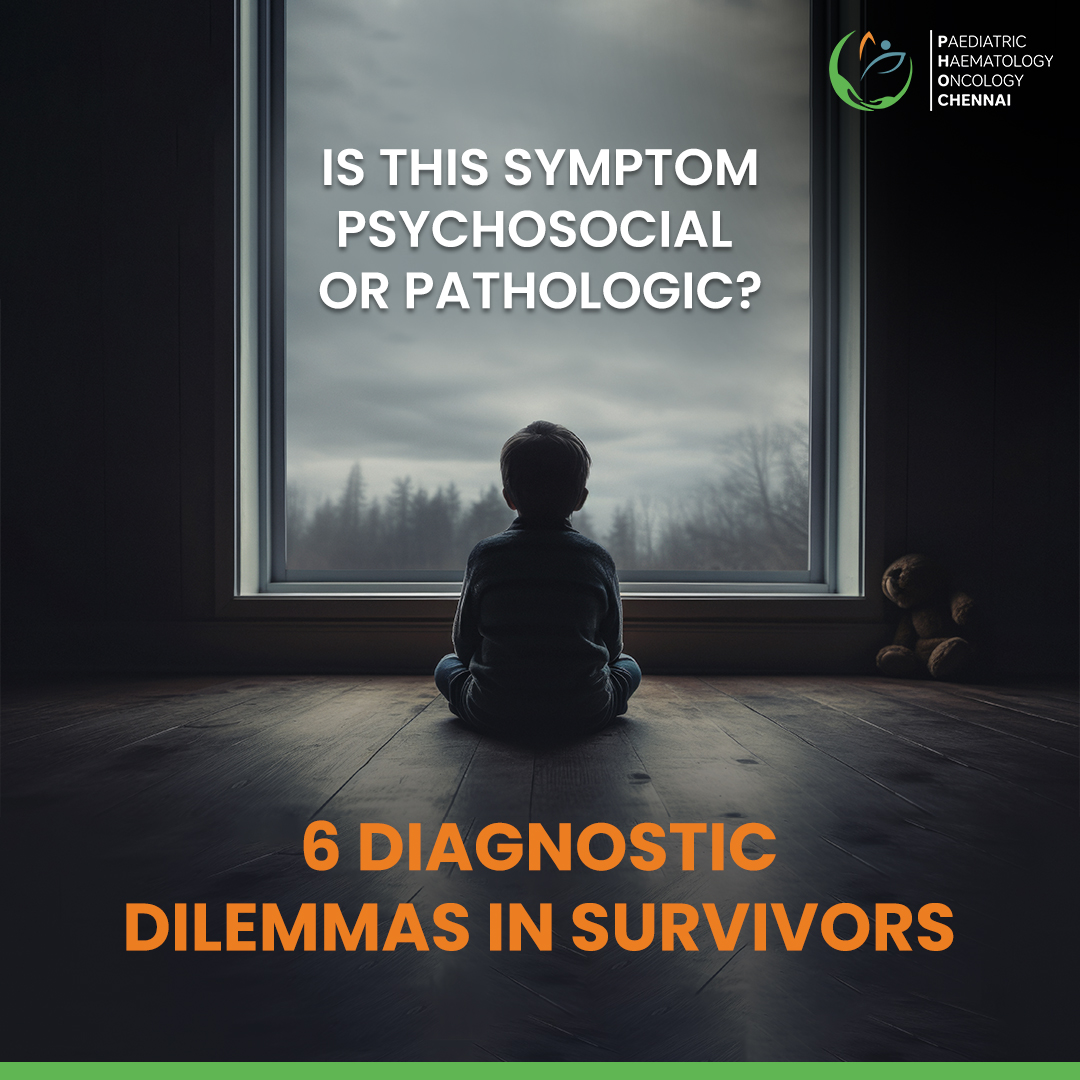Is This Symptom Pathologic? 6 Diagnostic Dilemmas in Survivors
Childhood cancer survival has dramatically improved, with over 85% of children in high-income countries now surviving five years post-diagnosis. Yet long-term survivors often present with chronic symptoms that blur the line between psychosocial distress and delayed pathologic effects of therapy.
This diagnostic gray zone is common, under-discussed, and often misinterpreted, which can lead to either over-investigation or under-treatment.
Here are six clinical scenarios where clinicians often face a diagnostic dilemma: is the symptom psychosocial, or does it signal an underlying pathology?
1. Fatigue That Persists Despite Normal Labs
Fatigue is the most commonly reported symptom among childhood cancer survivors, affecting nearly 30–50% of them long after treatment ends.
This can stem from anemia, endocrine dysfunction (particularly hypothyroidism or growth hormone deficiency), or late cardiotoxicity. However, fatigue is also strongly associated with depression, anxiety, and post-traumatic stress symptoms.
What to look for:
- Recent thyroid function tests, cortisol levels, echocardiogram
- Sleep hygiene and screen time
- Mood symptoms or school absenteeism
What helps:
If fatigue persists after excluding medical causes, cognitive behavioral therapy (CBT), physical reconditioning, and psychosocial counseling can be effective. Consider referral to survivorship or adolescent medicine clinics for a multidisciplinary approach.
2. Headaches With Normal Neurologic Exam and Imaging
Many survivors of CNS tumors or leukemia treated with cranial radiation or intrathecal methotrexate report chronic headaches. While these can signal long-term leukoencephalopathy, vascular injury, or recurrence, they are often tension-type or migraine-like in nature, sometimes exacerbated by stress, school, or family dynamics.
What to look for:
- Headache pattern (progressive vs intermittent)
- Association with screen use, sleep, hydration, anxiety triggers
- Prior CNS therapy history (e.g., cranial radiation >18 Gy)
What helps:
In the absence of focal deficits or imaging changes, consider psychosomatic amplification. Treatment may include migraine prophylaxis, stress reduction, and addressing school-related anxiety.
3. Abdominal Pain With Negative Workup
Up to 25% of pediatric cancer survivors, particularly those treated for neuroblastoma or Wilms tumor, report chronic abdominal discomfort. Differential diagnoses include adhesions, radiation enteritis, or pancreatic insufficiency, but anxiety and functional GI disorders like IBS are also common.
What to look for:
- History of abdominal surgery or radiation
- GI symptom correlation with meals, stress, or defecation patterns
- Weight loss or growth delay
What helps:
Rome IV criteria can help diagnose functional GI disorders. Low-dose antidepressants or CBT may improve symptoms. Diet modifications (e.g., low-FODMAP) may help in select cases.
4. Memory Problems or Inattention
"Survivors of leukemia and brain tumors often report chemo brain" or cognitive fog. Neurocognitive deficits may include working memory, processing speed, and executive function impairments. However, ADHD, depression, and school-related stress can mimic these symptoms.
What to look for:
- Age at diagnosis (younger age, especially under 5, increases risk)
- Type of CNS-directed therapy
- Academic performance vs teacher/parent behavior reports
What helps:
Formal neuropsychological testing is critical for distinguishing organic deficits from psychosocial contributors. Cognitive rehabilitation, IEP accommodations, and stimulant medications are often useful.
5. Chest Pain or Palpitations in a Young Survivor
Survivors exposed to anthracyclines (e.g., doxorubicin) or chest radiation have an elevated lifetime risk of cardiomyopathy and coronary artery disease, even decades after therapy. However, many children and adolescents also experience stress-induced chest tightness or panic symptoms.
What to look for:
- Anthracycline dose (>250 mg/m² associated with higher risk)
- Echocardiogram findings (LVEF, wall motion abnormalities)
- History of panic, anxiety, or hyperventilation
What helps:
A normal ECG and echocardiogram reduce concern for structural heart disease. If symptoms are situational and reproducible with anxiety, psychosocial referral and breathing techniques may be helpful.
6. Musculoskeletal Pain Without Physical Findings
Joint or limb pain in survivors of bone tumors, leukemia, or lymphoma may raise fears of relapse, osteonecrosis, or second malignancy. However, musculoskeletal pain is also a common somatic expression of anxiety or trauma, especially in survivors with PTSD.
What to look for:
- Pain location, consistency, and relation to activity or rest
- Prior steroid exposure (linked to osteonecrosis)
- Trauma triggers (clinic visits, scans)
What helps:
After ruling out osteonecrosis or recurrence with imaging, reassurance, physical therapy, and trauma-informed counseling are often more effective than pharmacologic approaches.
Final Thoughts
In survivorship care, symptoms should never be dismissed as purely psychological, nor should every complaint trigger exhaustive medical testing. Many pediatric cancer survivors live with a mix of physical and psychological effects.
If you care for childhood cancer survivors, integrate routine screening for both psychosocial health and physical late effects. Use multidisciplinary assessments to avoid overmedicalizing psychological symptoms, or missing treatable pathology. Survivorship is complex, but your diagnostic clarity can make a lasting impact.






Comments